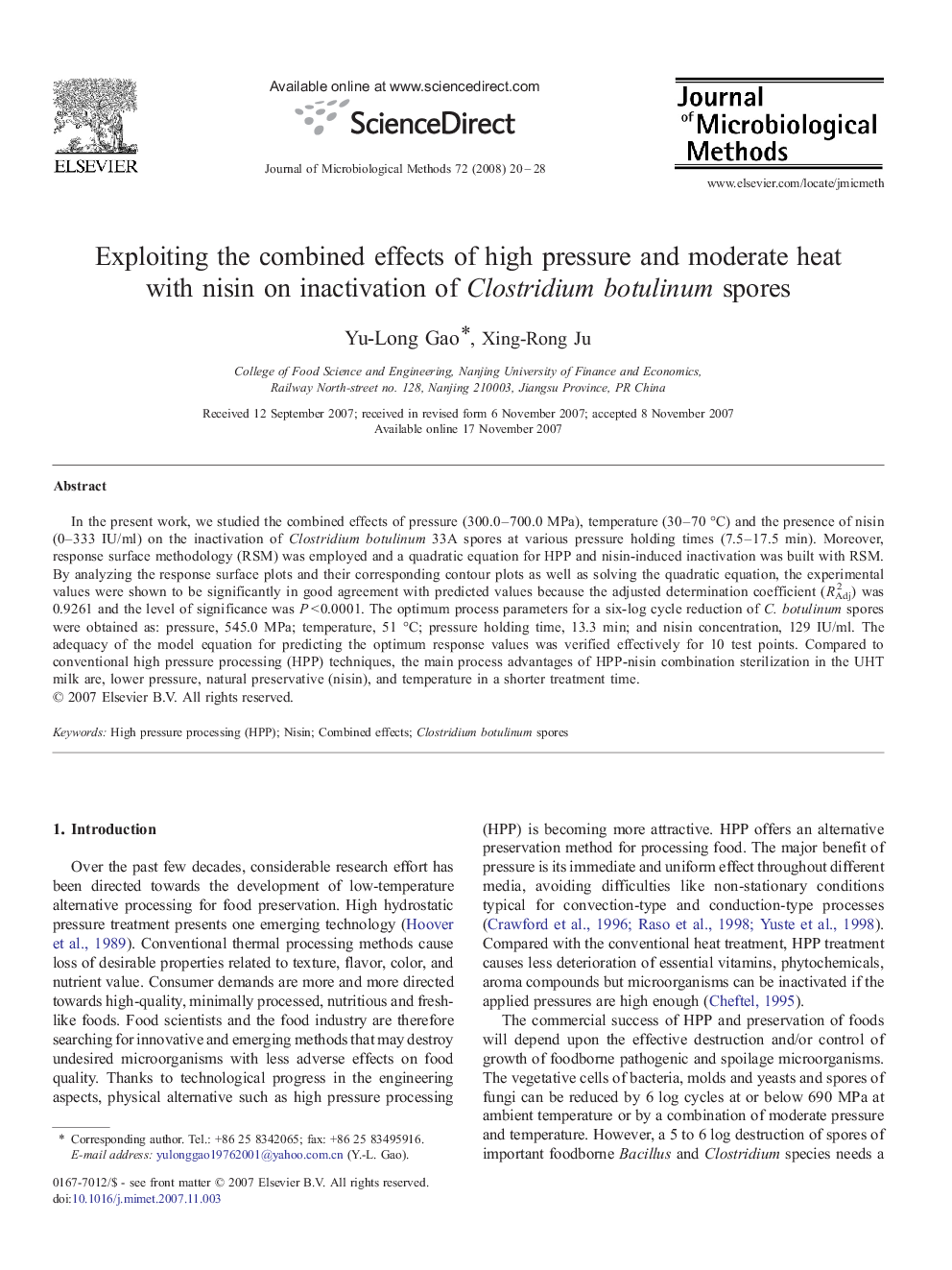| Article ID | Journal | Published Year | Pages | File Type |
|---|---|---|---|---|
| 2090878 | Journal of Microbiological Methods | 2008 | 9 Pages |
In the present work, we studied the combined effects of pressure (300.0–700.0 MPa), temperature (30–70 °C) and the presence of nisin (0–333 IU/ml) on the inactivation of Clostridium botulinum 33A spores at various pressure holding times (7.5–17.5 min). Moreover, response surface methodology (RSM) was employed and a quadratic equation for HPP and nisin-induced inactivation was built with RSM. By analyzing the response surface plots and their corresponding contour plots as well as solving the quadratic equation, the experimental values were shown to be significantly in good agreement with predicted values because the adjusted determination coefficient (RAdj 2) was 0.9261 and the level of significance was P < 0.0001. The optimum process parameters for a six-log cycle reduction of C. botulinum spores were obtained as: pressure, 545.0 MPa; temperature, 51 °C; pressure holding time, 13.3 min; and nisin concentration, 129 IU/ml. The adequacy of the model equation for predicting the optimum response values was verified effectively for 10 test points. Compared to conventional high pressure processing (HPP) techniques, the main process advantages of HPP-nisin combination sterilization in the UHT milk are, lower pressure, natural preservative (nisin), and temperature in a shorter treatment time.
